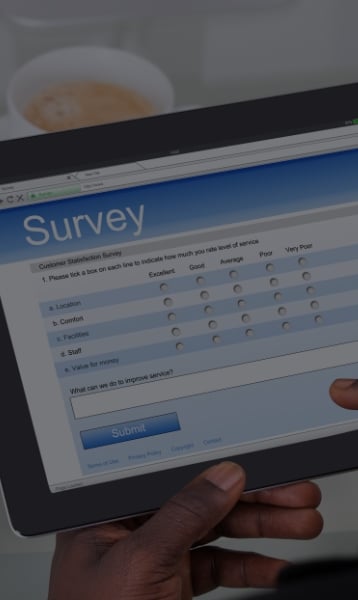This interactive portal improves the analytic experience so you can easily interact with data.
Press Release: 33% of US Workforce Use Prescription Pain Medications per Integrated Benefits Institute Opioid & Pain Management Study

Marshall Riddle
Findings indicate growing crisis with pain in the workforce; millennials and males have greatest problematic use
SAN FRANCISCO – April 18, 2019 –
Chronic pain is a contributing factor to the deadly opioid epidemic and compounding this tragedy is its toll on worker’s daily lives. Use of prescription pain medications are associated with approximately 261 lost workdays per 1,000 workers per month according to a new study released by the Integrated Benefits Institute (IBI), a nonprofit health and productivity research organization. When compared with non-users of prescription pain relievers, non-problematic users took more than twice the number of sick days, and problematic users took more than three times the number of sick days.
“A large percentage of the working age population is dealing with pain – both physically and emotionally – and many are self-medicating through alcohol, prescription drugs and other substances,” said Thomas Parry, PhD, president of IBI. “It’s important that employers not view addiction as a moral issue or take a one-size-fits-all approach to deal with substance abuse for their employees. Employers should ensure their programs include effective pain management approaches that minimize the risk of opioid abuse to improve productivity and help curb the epidemic.”
IBI’s analysis examined lost work time associated with prescription pain relievers within the context of other substance use disorders in the US labor force. The data studied were from the National Survey on Drug Use and Health, a cross-sectional survey of US households that provides national estimates for the use of drugs, alcohol and tobacco among the civilian population. Data from 2015, 2016 and 2017 were combined, and those in the labor force over the age of 18 were examined for the research using SAS software for the analyses.
Key findings include:
- One in three workers reported using prescription pain relievers—the majority under treatment of a physician.
- Males and millennials were the most impacted by substance use disorders.
- Less than one in 20 workers reported abuse or dependence of pain relievers.
- Abuse and dependence of alcohol is reported at higher rates than pain relievers and other prescription medications.
- Reported use of cocaine, methamphetamine or heroin was relatively uncommon.
- Pain reliever use was associated with the most excess absences. On average, non-problematic use of pain relievers was associated with 0.8 days of excess absences per month per person compared with non-users. The problematic use of pain relievers was associated with 2.0 absences, or 1.2 excess days per month compared with non-users.
- Generally, excess absences associated with problematic use of substances are significantly greater than for non-problematic use.
“The high rates of prescription pain medicines among employees indicates a much larger issue for employers than lost productivity,” said IBI Researcher Erin Peterson, MPH, the report’s first author.
“The significant number of sick day absences by employees who use pain relievers without problems likely doesn’t represent the full impact. As most people abusing opioids started with prescribed medications, this is a very large number of people at risk for developing problematic behaviors associated with pain relievers.
“Because so many of these individuals are in the workforce, employers should be motivated to take steps to prevent their employees from moving to riskier use of prescription medications. We’ve spoken with experts in the field who have provided excellent guidance and our report offers actionable strategies to help employers navigate these issues.”
Health & Benefits Leadership Conference
On Tuesday, April 25 at the Human Resource Executive Health & Benefits Leadership Conference, IBI’s Research Director Brian Gifford, PhD, will lead a breakout session, Treating the Opioid Crisis: Workplace Challenges and Remedies. Discussion will center around how employers can assess the opioid epidemic’s impact on the lives of their workers and the performance of their businesses and develop effective substance-abuse benefits for employees and family members in need of help.
About Integrated Benefits Institute
The Integrated Benefit Institute’s independent research, industry-leading tools and data resources help companies link health-related programs to the outcomes that maximize the contributions of people to productivity and business performance. Founded in 1995, IBI is a national nonprofit research organization and business association serving 1,100 employer and supplier members and their 22 million employees. . For additional information, please visit www.ibiweb.org and follow us on Twitter and LinkedIn.
# # #
- December 2024 (1)
- November 2024 (1)
- July 2024 (1)
- June 2024 (1)
- March 2024 (1)
- February 2024 (1)
- January 2024 (1)
- December 2023 (1)
- November 2023 (1)
- August 2023 (1)
- July 2023 (1)
- May 2023 (2)
- February 2023 (2)
- January 2023 (2)
- November 2022 (1)
- October 2022 (1)
- September 2022 (1)
- March 2022 (1)
- February 2022 (1)
- January 2022 (1)
- December 2021 (1)
- September 2021 (1)
- April 2021 (2)
- December 2020 (1)
- October 2020 (1)
- September 2020 (2)
- August 2020 (2)
- July 2020 (1)
- April 2020 (1)
- March 2020 (1)
- November 2019 (1)
- September 2019 (1)
- July 2019 (1)
- June 2019 (2)
- May 2019 (1)
- April 2019 (1)
- February 2019 (1)
- November 2018 (1)
- September 2018 (1)
- August 2018 (1)
- June 2018 (1)
- March 2018 (1)
- March 2017 (1)
- February 2017 (2)
- Absence (1)
- Absence Management (1)
- analytics (1)
- Behavioral Health (1)
- Benchmarking (2)
- Benchmarking Analytics (1)
- Benefit Design (2)
- Benefits + Plan Design (2)
- Blog (1)
- Business Performance (1)
- CDHP (1)
- CFO Survey (2)
- COVID-19 (6)
- Depression (3)
- director (1)
- Disability Leave (7)
- Extreme Weather (2)
- Family + Parental Leave (3)
- FMLA (2)
- Health + Productivity Management (3)
- Healthcare (1)
- Healthcare Costs (2)
- lost time (1)
- Manage Absence (2)
- Medication Adherence (1)
- Mental + Emotional Health (4)
- Mental Health (2)
- new hire (1)
- Parental / Family Leave (1)
- Patient-Centered (1)
- Press Releases (50)
- Preventive Care (1)
- Productivity (3)
- Research (2)
- Research Report (1)
- Return to Work (1)
- Sick Leave (2)
- Telehealth (1)
- Telemedicine (1)
- Worker's Compensation (1)
- Workplace Health Programs (1)




























